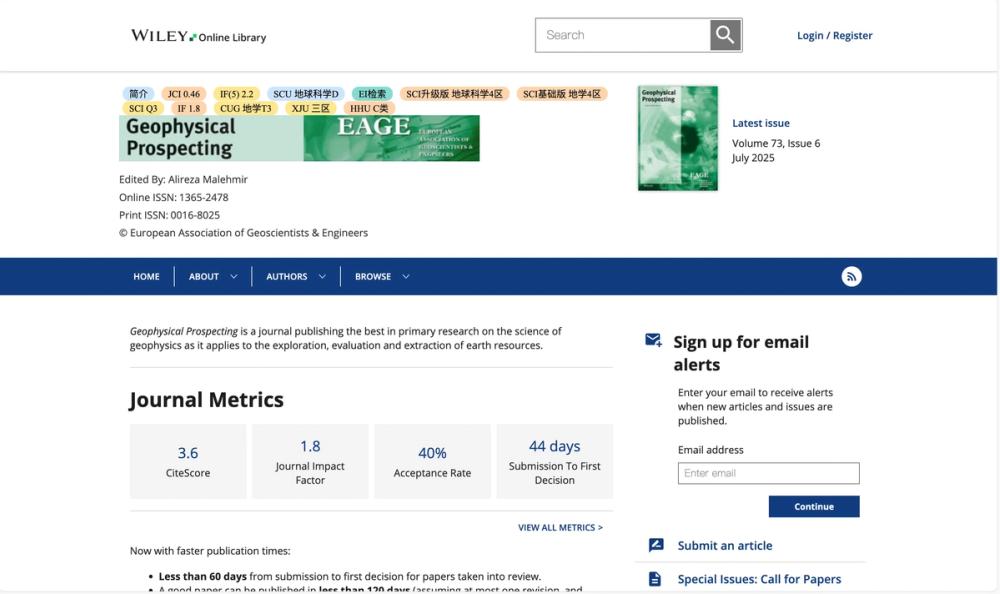Geophysical Prospecting, published by Wiley on behalf of the European Association of Geoscientists and Engineers (EAGE), is a leading international journal dedicated to advancing the science of geophysics as it applies to the exploration, evaluation, and extraction of earth resources. Established in 1953, the journal has a long-standing reputation for its practical orientation, drawing significant contributions from researchers in the oil and mineral exploration industries while also serving as a valuable platform for academic geophysicists. Its primary focus is on the application of geophysical methods—such as potential field, electromagnetic, and seismic techniques—to address challenges in resource exploration and monitoring, making it a critical resource for professionals and researchers in both industry and academia.
The journal publishes a variety of content, including original research papers, research notes, review papers, and case studies, with an emphasis on theoretical, numerical, and practical advancements in geophysics. Topics covered include, but are not limited to, acoustics, anisotropy, data processing, inversion, petrophysics, reservoir geophysics, and seismic tomography. It welcomes contributions that explore innovative methodologies, such as integrated geophysical approaches for mineral exploration or advanced seismic imaging techniques, as highlighted in its special issues, such as the 2024 call for papers on "Advances in Geophysical Modelling and Interpretation for Mineral Exploration." The journal’s scope ensures it remains relevant to real-world applications, such as hydrocarbon and mineral resource evaluation, while fostering cutting-edge academic research.
Geophysical Prospecting operates a rigorous peer-review process, with manuscripts evaluated for originality, scientific rigor, and relevance to its readership. Papers are typically reviewed by two experts within four weeks, ensuring timely feedback. The journal uses a single-anonymized review process and supports open-access publication options, with no page limits or charges for color figures, enhancing accessibility for authors. Manuscripts are submitted via the EAGE’s ScholarOne platform, and authors are encouraged to use tools like Authorea for streamlined formatting. The journal also participates in Wiley’s Refer & Transfer program, recommending alternative Wiley journals for manuscripts not suited to its scope.
With an impact factor of 1.99 in 2023 and an h-index of 96, Geophysical Prospecting is highly regarded, ranking in the top quartile (Q1) of geophysics journals according to SCImago Journal Rank (SJR). It is indexed in major databases like Scopus, ISI, and MEDLINE, ensuring wide dissemination. The journal’s commitment to reducing environmental impact is evident in its shift to online-only publication since 2022, with print-on-demand options for whole volumes. Its editorial board, led by Editor-in-Chief Alireza Malehmir, includes international experts, ensuring diverse perspectives. By fostering collaboration between industry and academia, Geophysical Prospecting continues to be a vital forum for sharing innovative ideas and practical solutions in exploration geophysics.




